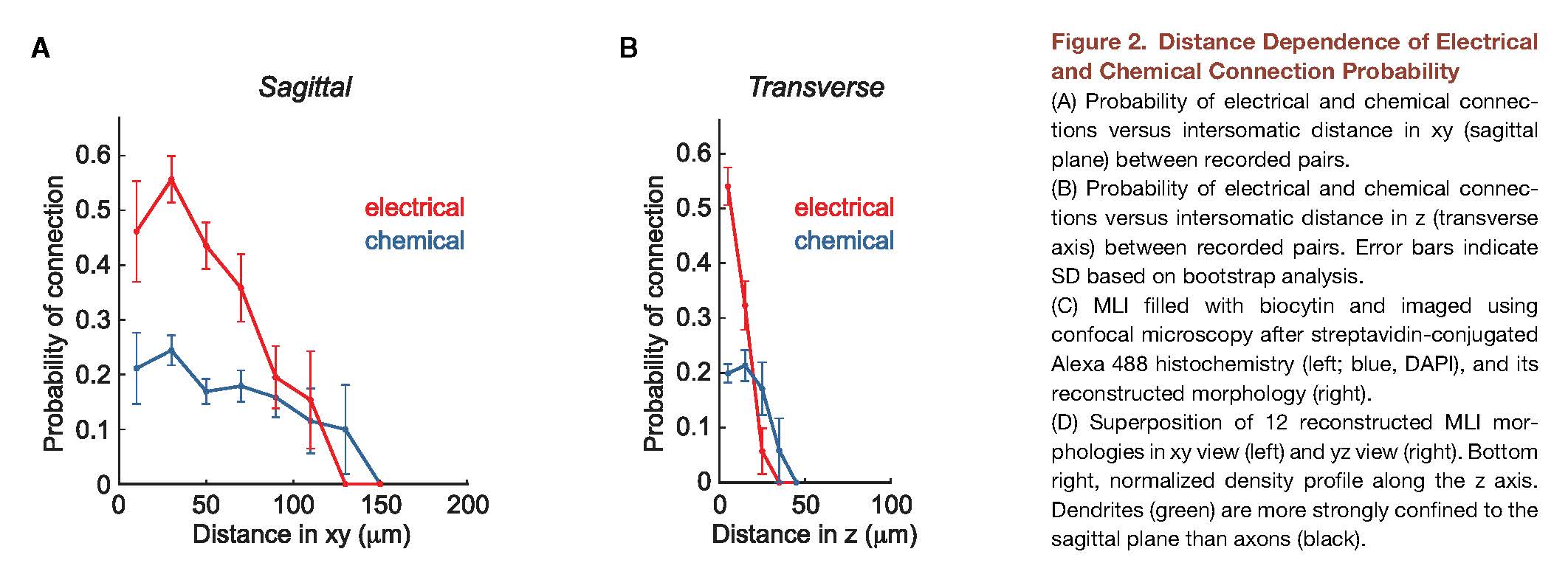RieublandS+2-2014¶
Notes about [RieublandS+2-2014] 1.
- 1
Sarah Rieubland, Arnd Roth, and Michael Häusser. Structured Connectivity in Cerebellar Inhibitory Networks. Neuron, 81(4):913–929, February 2014. URL: https://linkinghub.elsevier.com/retrieve/pii/S0896627313011902, doi:10.1016/j.neuron.2013.12.029, Notes: RieublandS+2-2014.html (this file).
This paper shows the difference between sagittal and transverse inhibition from molecular interneurons in rat.
From Abstract:
By recording from multiple molecular layer interneurons in the cerebellar cortex, we reveal specific, nonrandom connectivity patterns in both GABAergic chemical and electrical interneuron networks. Both networks contain clustered motifs and show specific overlap between them. Chemical connections exhibit a preference for transitive patterns, such as feedforward triplet motifs. This structured connectivity is supported by a characteristic spatial organization: transitivity of chemical connectivity is directed vertically in the sagittal plane, and electrical synapses appear strictly confined to the sagittal plane. The specific, highly structured connectivity rules suggest that these motifs are essential for the function of the cerebellar network.
From p. 923:
Although classically MLIs have been divided into basket and stellate cells, our data support the accumulating evidence suggesting that these cells constitute a single population with a continuum of morphological properties with their position in the ML as main parameter: their dendrite length becomes gradually shorter the higher the interneuron is located in the ML

Figure 2 in RieublandS+2-2014 [RieublandS+2-2014].¶